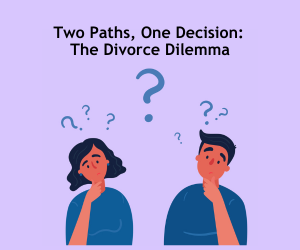As a divorce attorney, I often ask myself “What is this dispute really about?” This is also a good question for each person going through a divorce.
In an early case I had before I started practicing collaborative divorce, an ex-wife sued my client after the divorce was final. Her motion said that he had wrongfully taken the Tupperware and her maternity clothing and she wanted those items. We actually had a court hearing on this and her ex-husband had to get on the witness stand and testify. He testified that he did not have the Tupperware and he did not have and had no use for her maternity clothes.
That brought out a chuckle from those in the courtroom and the judge stifled a grin. The motion was denied and I felt like we “won.”
Looking back, I now realize that the divorce did not resolve some underlying issues which caused the dispute to keep on going. In a traditional divorce, the legal issues control the outcome in court and the emotional issues determine how long and how costly the dispute is.
In a
collaborative divorce, both the emotional and legal issues are acknowledged and addressed. The process we use focuses on the interests the parties have – and in my experience most of those interests are shared by both. If there are differences, those are discussed. The basic facts needed are incomes, values of assets, debt balances –which can easily be verified by documents. Those assets that are harder to value such as homes, businesses – can be valued by a neutral expert agreed to by both
The emotions of anger and perceived wrongs of the past can impede progress in reaching a final agreement. In a collaborative divorce, a neutral coach who is a mental health professional working with the couple, helps them work through those impediments to a settlement.
If you are going through a divorce, you want to avoid arguing about the Tupperware and get some help to focus on what your real interests are and how you can reach an agreement.
More Collaborative Law Posts



